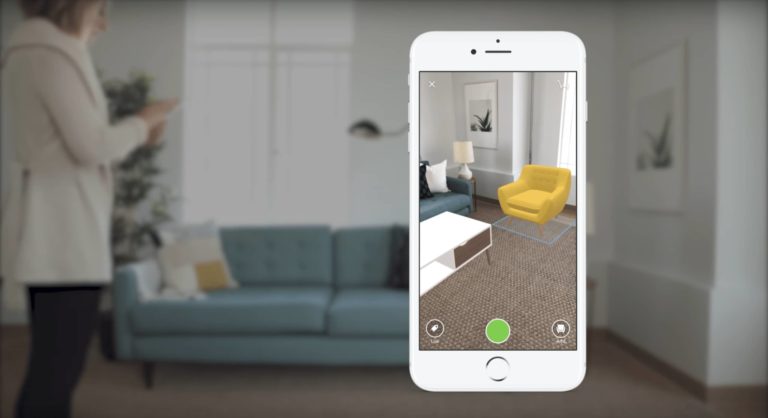
We’ve spent more than two years living under the shadow of a global pandemic, and it has changed a lot of things about the way we live, work, and play. Masks, which were already common in places like Japan as a tool to combat pollution, became essential. It became a lot easier to judge 6 feet when we did venture out into the world, and contactless practices became the norm.
The goal of getting things back to normal has evolved into something new as the virus is shifting from pandemic — which had the potential to end — to endemic, like the influenza virus. The practices that we’ve developed throughout the pandemic, such as contactless everything, will likely continue, and we will need to find new ways to navigate this new and ever-changing normal. Could existing technologies like augmented reality bring businesses into the contactless age?
Using AR to Go Contactless
Some companies have already started using augmented reality as a way to improve and augment the consumer experience. Amazon, for example, allows you to use the camera on your phone plus an AR program to see how a piece of furniture or other decorative items might look inside your home.
Others are using the technology to create a comprehensive brand experience to improve customer service, polish customer interactions, and even make day-to-day operations simpler. Walmart announced in 2020 that they were going to use AR as a tool for taking inventory. Others are using it for advertising and marketing and trying to extend the 5- to 10-second window you have to get customer attention with traditional signage into something that encourages more sales.
The technology has the potential to reduce or even eliminate the need for a trip to the store every time a customer needs something. Early in the pandemic, retailers were exploring the use of AR as a way to reduce the need for additional sanitation and to give customers more information about a product they were interested in without having to come in contact with said product. AR even helps with tasks like in-store navigation, in order to limit interaction with employees, and makes marketing and branding more interactive.
Challenges to the Contactless Future
Contactless payments aren’t a new concept, though they’ve just started catching on in the United States over the last few years. Keeping things contactless has a number of benefits, such as improved security due to NFC (near-field communication) data encryption for payments, but it has its downsides as well.
For one thing, the number of businesses that offer contactless experiences for payment or shopping is still fairly low, though it is growing. This sort of AR-based contactless technology also isn’t available to everyone. At the absolute minimum, consumers need a cell phone with a camera and an internet connection. Wearable technology would be more efficient, but after the failure of Google Glass and the exorbitant price tags attached to other AR headsets, it’s simply out of reach for most average users.
AR Isn’t Perfect — Yet
Augmented reality is fun when you’re projecting a Pokémon onto the sofa in your living room for a cute picture, but when you’re dealing with a shelf full of products that all look frighteningly similar, differentiating real from virtual becomes more challenging.
AR might sound like the perfect solution for companies looking for a contactless future, but the technology isn’t quite perfect — at least not yet. Features like the passthrough camera on the Oculus Quest 2 virtual reality headset are supposed to create an AR experience, but the result is a grainy camera with a monochrome background.
This shouldn’t discourage companies from seeking out AR options. Just because the technology isn’t perfect doesn’t mean it isn’t showing potential. There are numerous applications for this technology, but right now, we’re on the ground floor as it begins to develop into something that could shape consumer experiences for decades to come.
Looking Toward the Future
If you’re curious about augmented reality or looking for a way to keep both employees and customers safe as the pandemic continues, it’s the perfect time to start exploring augmented reality. Take a closer look at the available technologies, and at your operation as a whole, to see where you might be able to take things contactless by taking advantage of AR as it continues to grow and evolve.
 April Miller is a senior writer at ReHack Magazine and editorial contributor at AR Insider. She specializes in VR/AR, IoT, and business technology. See her work here and follow her @rehackmagazine.
April Miller is a senior writer at ReHack Magazine and editorial contributor at AR Insider. She specializes in VR/AR, IoT, and business technology. See her work here and follow her @rehackmagazine.

